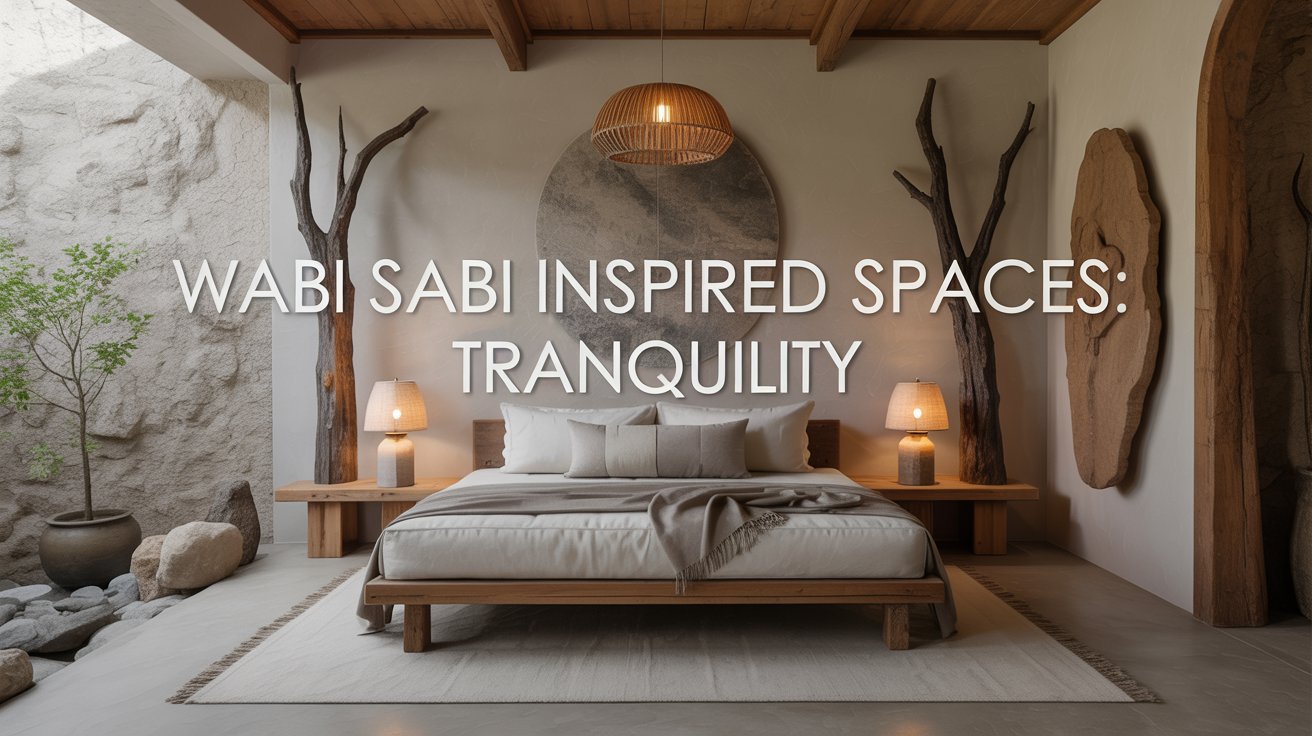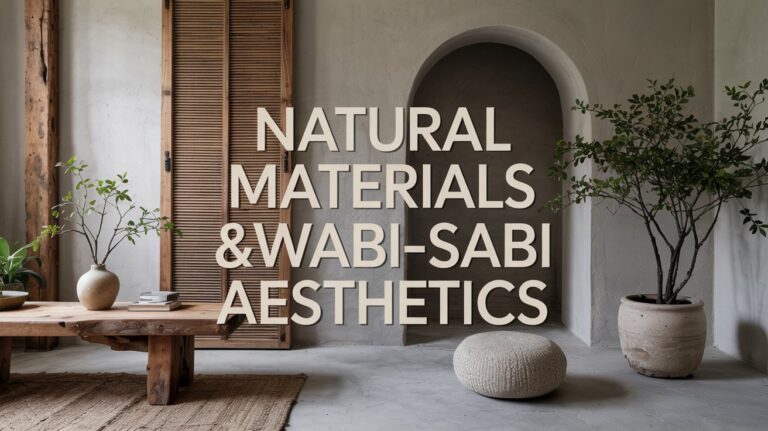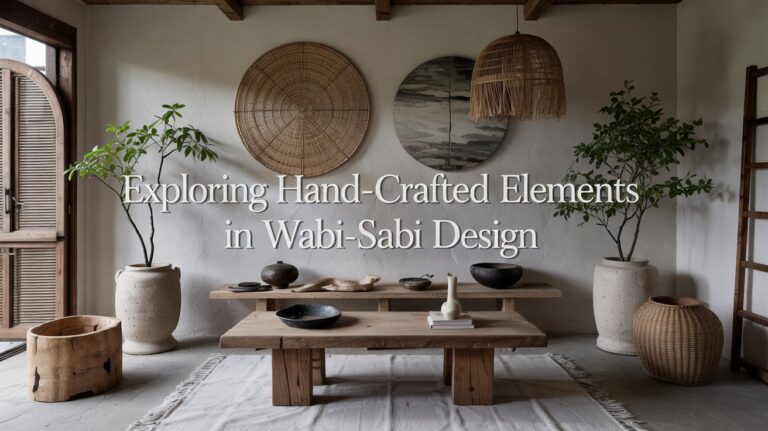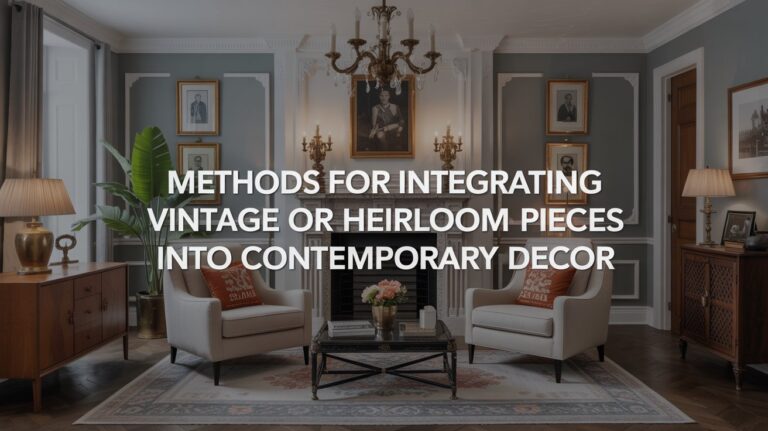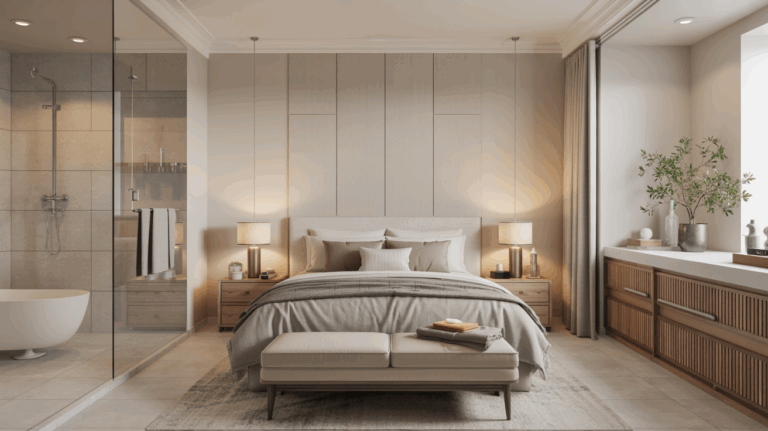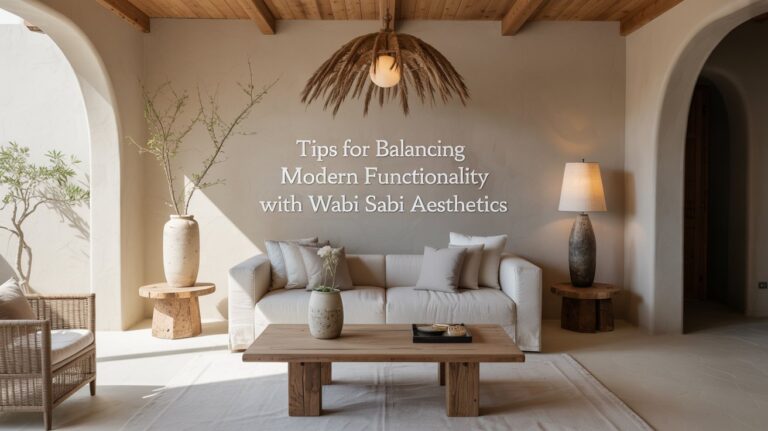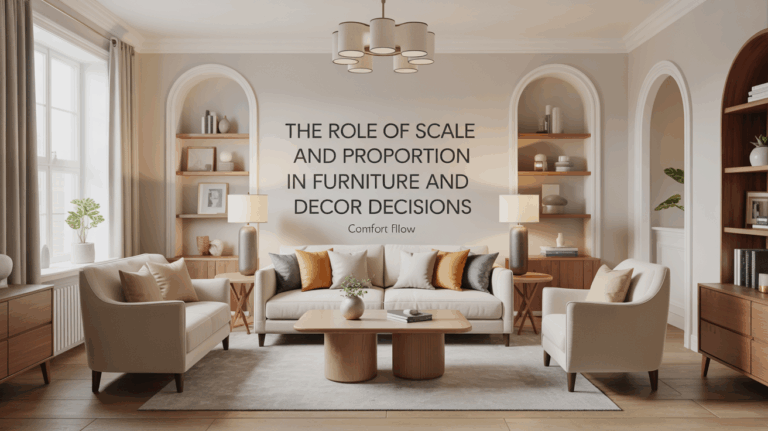Tips for Designing Wabi Sabi-Inspired Spaces That Promote Tranquility
I have been, or can be if you click on a link and make a purchase, compensated via a cash payment, gift, or something else of value for writing this post. As an Amazon Associate, I earn from qualifying purchases. Please read my full Affiliate Disclosure for more information.
To design tranquil Wabi Sabi spaces, embrace honest materials and texture—let the natural marks of stone, timber, and clay breathe. Choose soft, muted colors and layer earthy textures to ground the room, keeping surfaces uncluttered. Craft simple layouts that favor flow, negative space, and centered focal points. Connect indoors to outdoors with light-filtering elements and tactile surfaces. Practice mindful decluttering; curate one or two meaningful objects per surface. If you want more guidance, there’s more you’ll discover ahead.
Key Takeaways
- Celebrate natural imperfections by featuring handmade textures and raw materials that age gracefully.
- Use soft, earthy palettes with layered textures to create calm, cohesive spaces.
- Prioritize simple layouts, negative space, and mindful placement to foster flow and serenity.
- Integrate outdoor light and nature, softening brightness with screens and filtered layers.
- Practice mindful clutter control, keeping surfaces with one or two meaningful objects and dedicated storage.
Embracing Imperfection: Honest Materials and Texture
Embracing imperfection isn’t a flaw to fix but a feature to celebrate: honest materials, left with their natural marks, bring warmth, character, and honesty to a space. You’ll notice handmade finishes subtly narrate daily usage, while raw textures invite touch and memory. Choose surfaces that age gracefully—stone with veining, timber with kiln quirks, clay with subtle imperfections. Don’t mask the evidence of craft; let it breathe in light, shadow, and wear. This approach resists uniform polish, favoring tactility and presence. When intentional and restrained, imperfect materials create calm, grounded rooms that feel authentic, welcoming, and quietly refined.
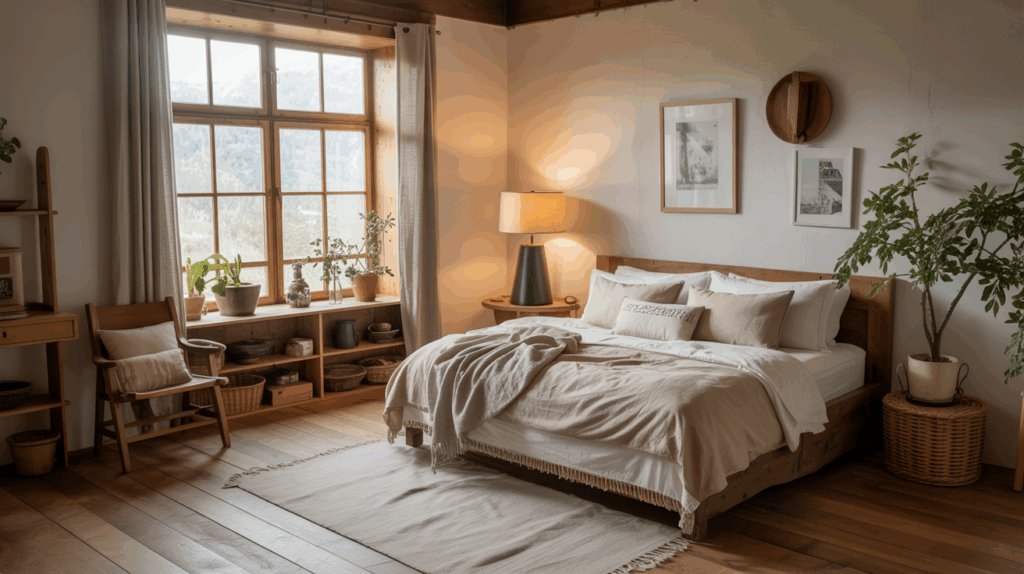
Soft Color Palettes: Subtle Tones for Calm Interiors
Soft color palettes carry forward the idea that restraint enhances calm. You’ll favor muted tones that whisper rather than shout, inviting rest rather than stimulation. Treat color as a quiet companion: think warm beiges, soft taupes, and gentle greens, layered to create depth without contrast overload. Let earthy textures—stone, linen, wood—ground the palette and give tactile interest that doesn’t compete with form. Keep surfaces uncluttered, allowing negative space to breathe. Use subtle shifts in tone rather than bold color blocks to define zones. The goal is harmony: serene rooms that feel intentional, balanced, and quietly nourishing for daily life.
Simple, Purposeful Layouts: Flow and Negative Space
You shape spaces that guide movement with flow through rooms, inviting you to notice how paths connect and ease passageways. Embrace negative space to let each element breathe, preventing clutter from stealing focus. This purposeful rhythm—how you place furniture, gaps, and sightlines—helps you feel calm, intentional, and present.
Flow Through Rooms
A well-flowing layout guides movement without shouting its presence, using simple, purposeful connections between spaces to create a sense of ease. You’ll notice how spatial connectivity invites you to traverse rooms naturally, avoiding abrupt turns or dead ends. Center furniture placement to maintain sightlines and rhythm, letting indoor paths feel as outdoor trails. Keep transitions calm with consistent materials, low profiles, and subtle color shifts that don’t overwhelm. Prioritize clear entrances, accessible circulation, and balanced focal points so you sense order without rigidity. This approach supports tranquility, clarity, and mindful, seamless exploration through the home.
Embrace Negative Space
Beyond the flow you’ve already established, embracing negative space means letting what’s not there speak as loudly as what is. You create calm by binding objects with intentional gaps, guiding attention rather than crowding it. Negative space isn’t emptiness; it’s presence that clarifies purpose. You’ll notice balance in minimalism when every placement earns its keep, letting light and texture breathe. Subtle clutter is avoided, and soft geometric accents appear as quiet punctuation rather than statements. Use restraint to design rhythm, not repetition. This restraint invites mindfulness, enhances texture, and keeps rooms breathable, where calm flows naturally and perception stays precise.
Purposeful Spatial Rhythm
Purposeful spatial rhythm arises from deliberate flow and careful negative space, so rooms feel guided rather than crowded. You shape spaces with simple, intentional layouts that honor ease over excess. Prioritize clear sightlines and purposeful vignettes; each area should lead naturally to the next. Use negative space to let objects breathe, avoiding clutter that interrupts calm. Spatial rhythm emerges when furniture, textures, and lighting echo a restrained cadence, inviting you to pause rather than rush. Consider focal points that anchor a sequence of steps, guiding movement with restraint. This intentional flow promotes tranquility, clarity, and a grounded sense of balance.
Natural Elements and Light: Connecting Inside With Outside
You notice how natural light flows through the space, changing with the day and seasons. Let outdoor elements—plants, textures, and views—mirror the interior to create a seamless, calming harmony. When indoors feel connected to outside, you’ll experience a quieter, more balanced atmosphere that honors Wabi Sabi.
Natural Light Flow
Natural light should feel as if it’s guiding you through the space, not competing with it. You design for flow, not glare, allowing daylight to appear where it’s needed most. Use unobtrusive screens and filtered layers to soften brightness without blocking horizon views. Align openings with sun paths to create gentle shifts that mark time, mood, and intention. Integrate zen gardens and meditation corners where light can linger, inviting stillness rather than spectacle. Keep surfaces tactile, edges unfinished, and shadows valued as texture. This balanced approach sustains quiet focus, clarity, and a sense of effortless harmony throughout the room.
Outdoor-Indoor Harmony
Even as you open the doors, the outside and inside should feel inseparable, with natural elements guiding light and movement through the space. Outdoor-indoor harmony emerges when garden integration becomes a soft extension of the room, drawing your eye to textures, plants, and water that echo inside finishes. Prioritize climate responsiveness: choose materials and plants that adapt to seasons, reducing glare and heat while inviting shade and breeze. Keep sight lines clean, with passages that feel continuous, not separate. This thoughtful balance nurtures calm, promotes mindful routines, and elevates spontaneous, tranquil moments within everyday living.
Mindful Clutter Control: Clarity Through Restraint
Mindful clutter control starts with a simple premise: fewer possessions translate to calmer space and clearer thinking. You’ll notice how restraint reinforces focus, not deprivation, by prioritizing meaning over volume. Clutter management becomes a routine, not a punishment, and visual simplicity emerges from thoughtful curation.
- Identify essentials rather than favorites
- Limit surfaces to one or two trusted objects
- Schedule weekly quick purge sessions
- Create dedicated homes for every item
- Use neutral palettes to reinforce calm
This approach sustains tranquility, supports mindful living, and keeps spaces breathable, functional, and elegantly understated.
Timeless Details: Subtle Asymmetry and Quiet Luxury
Subtle asymmetry offers visual interest without shouting for attention, while quiet luxury relies on refined materials, restrained color, and expert craft to speak volumes. You’ll notice how slight misalignments create texture and depth, inviting closer inspection without distraction. Embrace artistic asymmetry as a deliberate choice, not a flaw, cultivating a room that feels lived-in and honest. Pair understated elegance with natural finishes, tactile surfaces, and subtle patina to anchor serenity. The result is a composition that breathes, ages gracefully, and remains quietly confident. In practice, restraint guides refinement, and refined restraint becomes your most enduring design virtue.
Conclusion
In your space, embrace imperfection as a quiet ally, letting honest materials age with grace. You’ll notice textures that invite touch, not polish for polish’s sake. Let soft, restrained color calm the eye, while simple layouts create easy, unhurried movement. Bring in natural light and elements to blur indoor-outdoor lines, and prune clutter to reveal what matters. Finish with timeless details—subtle asymmetry and quiet luxury—that feel like you. Calm isn’t absence; it’s a deliberate, perceptive design choice.
